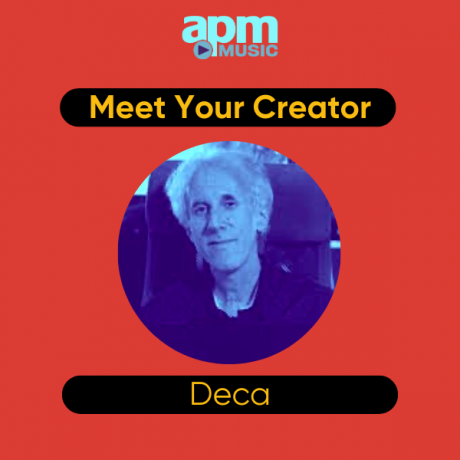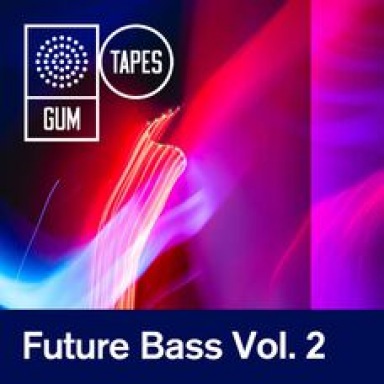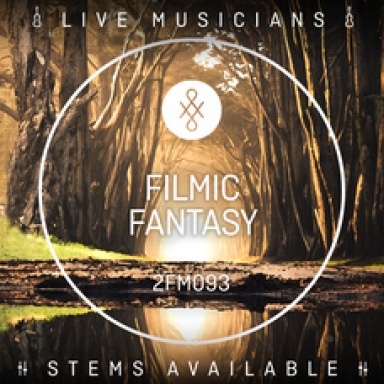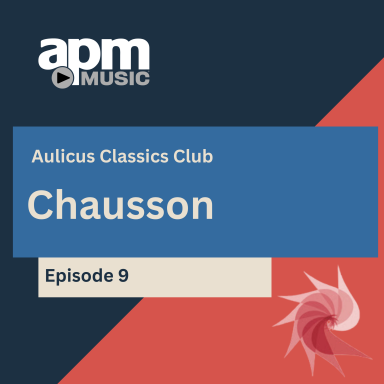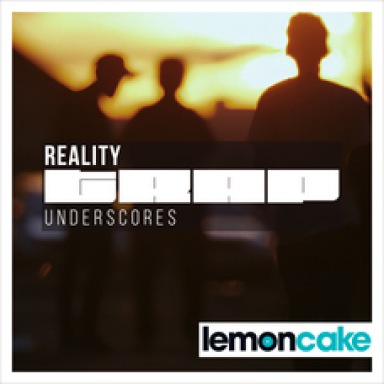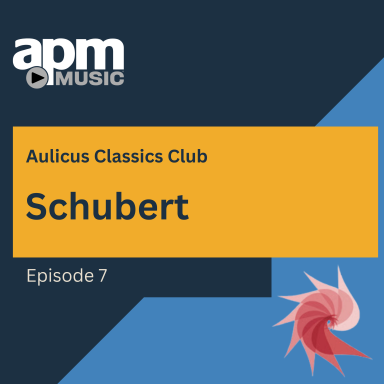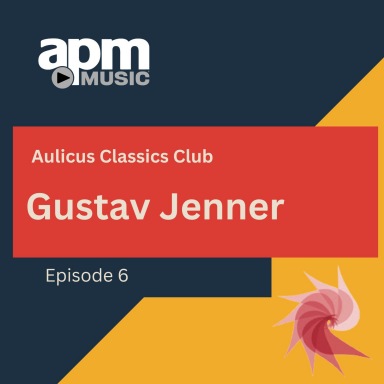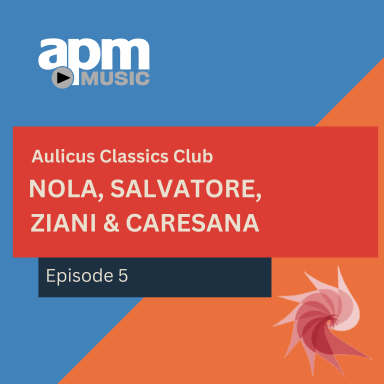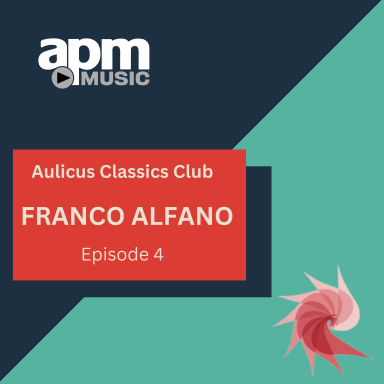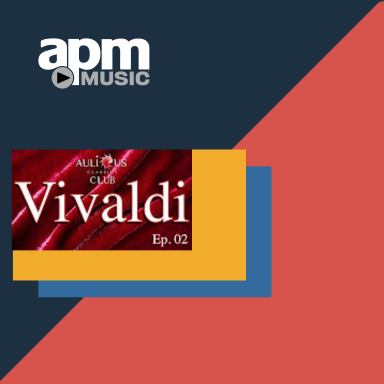Meet Your Creator: Deca
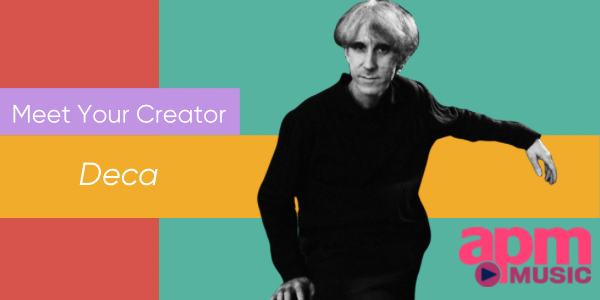
By Ted Reyes
Federico “Deca” De Caroli is a prolific film composer and one of the greatest music producers Italy has ever produced. Born on August 7, 1964, in Savona, Italy, he studied classical piano at an early age and later, after hearing music by Pink Floyd, Genesis, Kraftwerk, Jarre, Vangelis, and The Cure, pursued a career in pop, rock, and electronic music. He is regarded as one of the pioneers of Italian electronic music.
Deca wrote music for film and television for the Italian television network, RAI, and in 2009, his body of work was officially added to RAI’s music library. APM music has twelve albums filled with Deca’s brilliant music.
We had a chat with the legendary artist and talked about his musical background and his creative process.
Describe how the artists below influenced your music:
Pink Floyd
In 1974, I discovered Atom Heart Mother as a child. It was a great revelation– a powerful flash that led me to a fruitful personal and artistic path. Pink Floyd made me realize what a musician can really do apart from playing an instrument. They made extraordinary sounds. When I started studying classical piano at the age of 11, I tried playing Pink Floyd's songs. It was challenging but nevertheless inspiring. Although my piano teacher didn't quite agree!
Genesis
I love Genesis. They're a band that I still passionately listen to, especially the music that I discovered later like Wind and Wuthering. They used a lot of keyboards in their music, which I love. In fact, Tony Banks is one of my biggest inspirations. Genesis was less experimental in creating sounds and noises as compared to Pink Floyd, but they were more romantic, which is great!
Kraftwerk
I believe every contemporary pop musician owes a debt to Kraftwerk. The band has shown how electronic technology can help artists be more creative and innovative without losing the human touch. I remember the first time I heard Radioactivity was in 1975. It was another powerful flash that changed my life. Another door to the future was opened right there. Their innovative music hurled me into another dimension.
Jean Michel-Jarre and Vangelis
I consider these two artists complementary, somehow –two faces of the same coin. Perhaps because in those golden years of European electronic music–the second half of the 1970s–they were the most popular composers to exclusively use synthesizers. My first official producer was a great fan of Jarre and Vangelis. When we were at the studio to record my debut album, he always told me: “Don’t lose sight of Vangelis and Jarre! They're best source of innovative ideas to make a good record.” In fact, some tracks in Alkaid (1986) sound quite like Oxygene and Spiral.
Giorgio Moroder
Moroder has been a sort of indirect influencer. I've never bought one of his records. But I know everything he has produced in the last fifty years. I love his film music work like Midnight Express and Cat People. He was an eclectic artist who could create music for a wide range of genres from the dance floor to cinema to orchestral music filled with disco and electronic sounds.
The Cure
Robert Smith was one of my dark idols when I was in college. Especially because of his lyrics and his peculiar way of singing. The Cure have been an important touchstone for every young songwriter with a dark decadent soul. And many bands have been influenced by The Cure's style. My discography shows traces of my love for The Cure, even if my productions are more electronic than theirs. In addition, I think they are a notable example of humility. Months ago, former drummer and keyboardist of The Cure Lol Tolhurst said to me: “We did emulate our heroes. We strove to find our own style. It’s the mistakes you make that will become your sound. With us (The Cure) it was our limitations that became us.” This is a useful lesson if you think about where they started and what they've done in rock 'n' roll history.
New Order
Honestly, I prefer Joy Division to New Order. It's a question of personal growth. My very first band–I was 19–covered Joy Division's classics like “Transmission,” “Decade,” and “Love Will Tear Us Apart.” We wrote songs inspired by their sound. New Order have been an important source of influence for the electronic side of the post-punk scene. “Blue Monday” is the prototype that set the standard for how electronic music should sound. For me, their true masterpiece is “True Faith.” Such a stunning song with an amazing music video too!
Was the Roland JX 3P your first choice as opposed to something like Jupiter 8, Juno 60, Prophet 5, or Oberheim OB-X?
The Roland JX3P was a gift from my parents when I graduated from high school in 1983. There was a wide choice of synths at that time, and I remember that I couldn't ask for an Oberheim because it was too expensive. The JX3P was a good compromise. I still play it today and its timbres are very enjoyable.
What are your favorite JX 3P features?
I produced my first demos, on tape, just using JX3P. Until 1986, it was my only professional instrument at home, in addition to the piano. Its features seem limited, today, but I made tons of music using that 128-steps sequencer and those customizable preset sounds. Such clean and well-defined sounds. It was easy to program and manage, too. Some years ago, I've published a vinyl LP called Modulectron that is a compilation of my best early recordings played on Roland JX3P. A heartfelt personal tribute to my artistic youth.
What other synths or drum machines did you get after the JX?
I used a lot of Roland gear in the 1980s, such as Alpha Juno, JX8P, D-50, TR 707, and 808. I also used full workstations like the Yamaha SY77 and SY99. But to tell the truth, I've always loved less famous but celebrated gear. They inspire me to create. For example, in 1988, I bought a Roland D-20, an underrated workstation that I used extensively to record three of my most notable albums. I can always get unique sounds from this workstation that stunned many professionals in my field. I still have my D-20 and I continue to drive this instrument to its maximum potential.
Can you give examples of your music created with these synths?
In the beginning, I used a lot of presets from a variety of synthesizers that were popular during that time. As I matured, I learned how to use fewer machines and maximized their features. My Synthetic Lips album, recorded in 1987, is a fitting example of that workflow. I played ten to twelve different keyboards, adding drum-machines, external sequencers, digital effects racks, and so on. In the studio I had a wall-of-synthesizers made up of Junos, JX3Ps, DX7s, and so on.
At the end of the 1980s, I began to record in an unusual way. For my Claustrophobia album, I used two synths: The Roland D-50 and RolandD-20. For my Premonizione Humana, my first album on CD recorded in 1999, I used one instrument: the Yamaha SY99. It was a very versatile workstation, with an incredible sound generator. I continue to use old machines and find interesting ways to create original sounds.
In the 80’s some synthesizers would not allow you to save patches or sounds. How did you work on these?
This was one of the main problems with those old machines. It was frustrating. The only way to reproduce programmed sounds was to take notes, writing every value and every parameter on paper! I still have old notebooks filled with schemes, diagrams, and patch recipes.
What is the story behind your name Deca?
Deca is from my family name, De Caroli. It was my nickname at school. In time, Deca has taken on more complex meanings. It's linked to the concept of decade, to number ten, and so on. I've discovered that my birth and my life are full of number tens. I'm not superstitious, but I believe in the power of numbers. I've used Deca throughout my entire career.
Which albums or songs that you wrote and produced in the 1980s are you most proud of and why?
Certainly, Claustrophobia (1989). It is the perfect expression of what I was in the eighties. It's dark and minimalistic with an industrial atmosphere, heavy rhythm, and sharp timbres. It is more personal than any of my earlier records like Alkaid and Synthetic Lips. Claustrophobia tells a lot about my lifestyle, my thoughts, and my experiences during those years. It was also a turning point that ended a phase and started a new one.
In the 1990s, everything in music went digital. Was that good or bad?
Here we are still arguing about digital and analog many decades later. If you only use analog, technologists will call you a purist and old fashioned. On the other hand, old souls will call you a sellout if you start playing around with technology. I use both. Digital is useful to make things faster, while analog inspires artists to be more creative.
Do you miss your analog instruments and workflows?
Honestly, when I remember the countless hours, I spent cutting tape, mixing on a board, and mastering in studios, I am so thankful that the digital revolution happened.
What is your process in writing and producing music?
Improvisation is my method. I mean, I don't have a plan or an idea to develop. I just play. Ninety-five percent of my music is the result of improvisation, even for commissioned projects. This could be unorthodox in producing music for film or television, where directors and producers usually have clear ideas on what music should play in a specific scene or sequence. But I trust my innate ability to let the music flow.
Do you record demos, or do you go straight to a studio and record on the spot, or do you do everything in your home studio?
I have a small and well-equipped home studio that I call Atom Institute. I call I t so because I equate creative energy with atomic energy. There, I could completely focus on improvisation and recording. For mixing and mastering, I work with my sound engineer at the Mazzi Factory. It’s a big and amazing studio full of the best technology you can find today as well as vintage synthesizers, too. Alessandro Mazzitelli is a mad collector of old machines. We’ve been working together since the end of the ’80s, so he knows how to make my music shine.
How did you get into composing and producing music for film and television?
When I played my early compositions to people, they often said that my music would be perfect for a horror soundtrack or other film genres. Eventually, I began to write music for RAI, the national Italian TV network because my label Videoradio and my publisher were involved in various projects. My music became part of their libraries since 2009.
I wrote music for theatre and ballet, too. Now, I work with APM Music, the best place to be for a soundtrack composer like me.
Is this something you are still focusing on?
Definitely! I find great satisfaction in producing music for film and television. My eclectic style is an advantage in this industry.
Can you talk about the albums you have with Sonor/Intermezzi and APM?
Some of these albums are compilations of previously unreleased tracks I mainly recorded in the 1980s and 1990s. I got many old tapes from my archives and digitally remastered them all. When I recorded all this material, I couldn't imagine they could be useful four decades later. Today, vintage electronic sound is trendy!
Your album Isole Invisibili, is all piano music. What was the inspiration behind these? How did you produce them?
I've waited a long time to make a solo piano album. I am a pianist by heart so in 2017, I decided to record a retrospective anthology of my solo piano repertoire.
Fifteen tracks that cover a big part of my life from my adolescence until the day I recorded the album. It's a deeply emotional work. After Isole invisibili, I recorded another solo piano album Dreamtown Piano published in 2022 by Sonor Music and available through APM.
How about Epica Antiqua, Ambient Pop, and Emotional Landscapes?
I composed all the tracks in Epica et Antiqua in the early 1990s, when I was very fascinated by artists like Dead Can Dance. I wanted to recreate a magical and ancient sonic atmosphere using acoustic instruments. Ambient Pop and Emotional Landscapes are both collections of old previously unpublished tracks. I recorded them between the end of the 1980s and the middle of the 1990s, playing keyboards like Roland D-50 and using many sound patches from Emulator. That period was very prolific. I churned out one demo every month.
Do you have any advice for aspiring composers and musicians?
Don't be tempted by shortcuts and expensive technology you can't afford. Always remember that your limitations will be a big part of your unique style.
Deca's Discography
